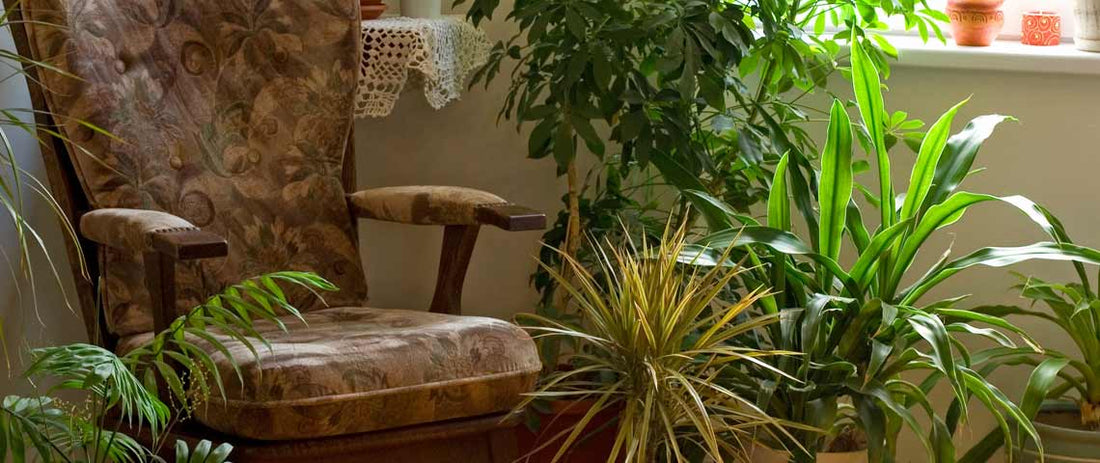
#StyledSeated Founder - Interview with Val
Val is the powerhouse behind the #StyledSeated movement, which challenges brands and individuals to show more seated poses, and share how garments look on people of all abilities in addition to their more complex posed images. She also has a bold and encouraging take on slow fashion and how it intersects with disability, chronic illness, neurodivergence, and body neutrality. We got a chance to chat about some of these things in this interview!

Connally:
You've got a great vibe, and having more style options for fat folks and those living with disability or limited mobility is important work to push further. I’m excited to learn more about that, but before diving in, the artist in me has to ask: what would you say some of your personal wardrobe inspiration comes from?
Val:
Thanks! I appreciate that. My personal wardrobe inspo is definitely a mix of different things. My dad had a huge record collection when I was a child and I used to come home from school and lay on the floor with albums playing, thumbing through the album covers. I always loved the style of the psychedelic-baroque pop-rock era. The album designs were always artfully designed with bright florals and paisleys.
I’ve also always loved my paternal grandmother’s style- she has a very classic way of dressing and always accessorizes her outfits intentionally. She took a class on Kibbe style system and another class on Seasonal Colour Analysis for skin tones and she helped me define my colour palette and style over the years.
And lastly, being disabled and chronically ill has shifted my style priorities to comfort. I’m no longer in a place where I will endure anything that isn’t 100% comfortable for the sake of being on trend.

CM:
#StyledSeated is taking off! None of us live our entire lives standing, so everyone's able to participate. How do you feel about things and have you gotten direct feedback on it, positive or negative?
V:
I’m so happy with the support that it’s received so far; my only wish is for it to continue expanding. I’ve had quite a few businesses commit to showing seated views of all of their garments and accessories.
I’ve had some feedback from the disability community that it’s helpful to see more seated bodies, but also that some of the poses are not always representative of disabled bodies. My hope is that as the movement grows, it will be more representative of all abilities, bodies and shapes.

CM:
You recently posted a ten day series of a capsule wardrobe worn in different ways. What are the core garments that you find you reach for the most, & what items would you wish to add to your closet?
V:
I tend to reach for soft overalls and soft pants. Life is way too short to wear uncomfortable pants.
I’m currently on the hunt for a seated winter coat that is genuinely warm. I say “on the hunt,” but currently such a garment doesn’t exist in my size.
CM:
A winter coat is a fundamental garment, particularly in the northern hemisphere. Not having one is a matter of accessibility and a major problem to be tackled. Outerwear hasn’t been something in my design wheelhouse, but it’s a necessity for a large percentage of the population, so it's something for myself and other brands to take into serious consideration when planning upcoming designs.
Fashion is political. It is a social issue, and there are many struggles that folks simply don’t understand if they’ve never dealt with mobility limitations, chronic illness, disability or living in a (glorious) fat body.
That means some people may not realise the practical challenges that come between certain styles and mobility aids, so here’s a great space to learn! In your experience, what are 3-5 everyday issues with clothing you encounter (not including adaptive brands) as someone who sometimes uses a wheelchair?
V:
Clothing that hasn’t been fit tested to be sat in completely baffles me. Like you mentioned, none of us live our lives constantly standing, so regardless of an expected customer’s ability, why would a designer make a garment that can’t be comfortably sat in?
When I used to use a manual wheelchair, anything that had sleeves that were too long or drapey were a hazard- I had a coat that got caught in the wheels and tore.
Also, skirts that are too short to sit with my legs open are a concern for me. I am not able to cross my legs comfortably, and while I don’t consider myself a prude, and as cool as my ARQ undies are, I don’t want to be just showing them off all of the time! The inverse of that however is that if a dress or skirt is too voluminous and flowy, I don’t just have a Marilyn moment- sometimes the skirt flies up and blocks my vision as I am wheeling down the sidewalk.
CM:
Yikes! Your sense of humour about it gives me a sense that these situations have come up more than anyone wants. It’s helpful for people to know they’re not alone in this, and helps brands working on solutions. On the flipside, what are 3-5 things that some labels currently offer (not specifically adaptive brands) that are helpful as someone who sometimes uses a wheelchair?
V:
Customization. Being able to adjust inseam, sleeve lengths or even add cuffs to some styles is so helpful. Swapping out buttons for snaps allows for ease of dressing.
CM:
That is great insight–it’s already impacted the design of some upcoming styles that were going to have buttons, but I’ve switched that to snaps. The other customization options are important as well and you’ve personally given me things to work towards implementing in 2022. Thank you for taking the time to chat with me about #StyledSeated and how we can take practical steps towards more inclusion!
